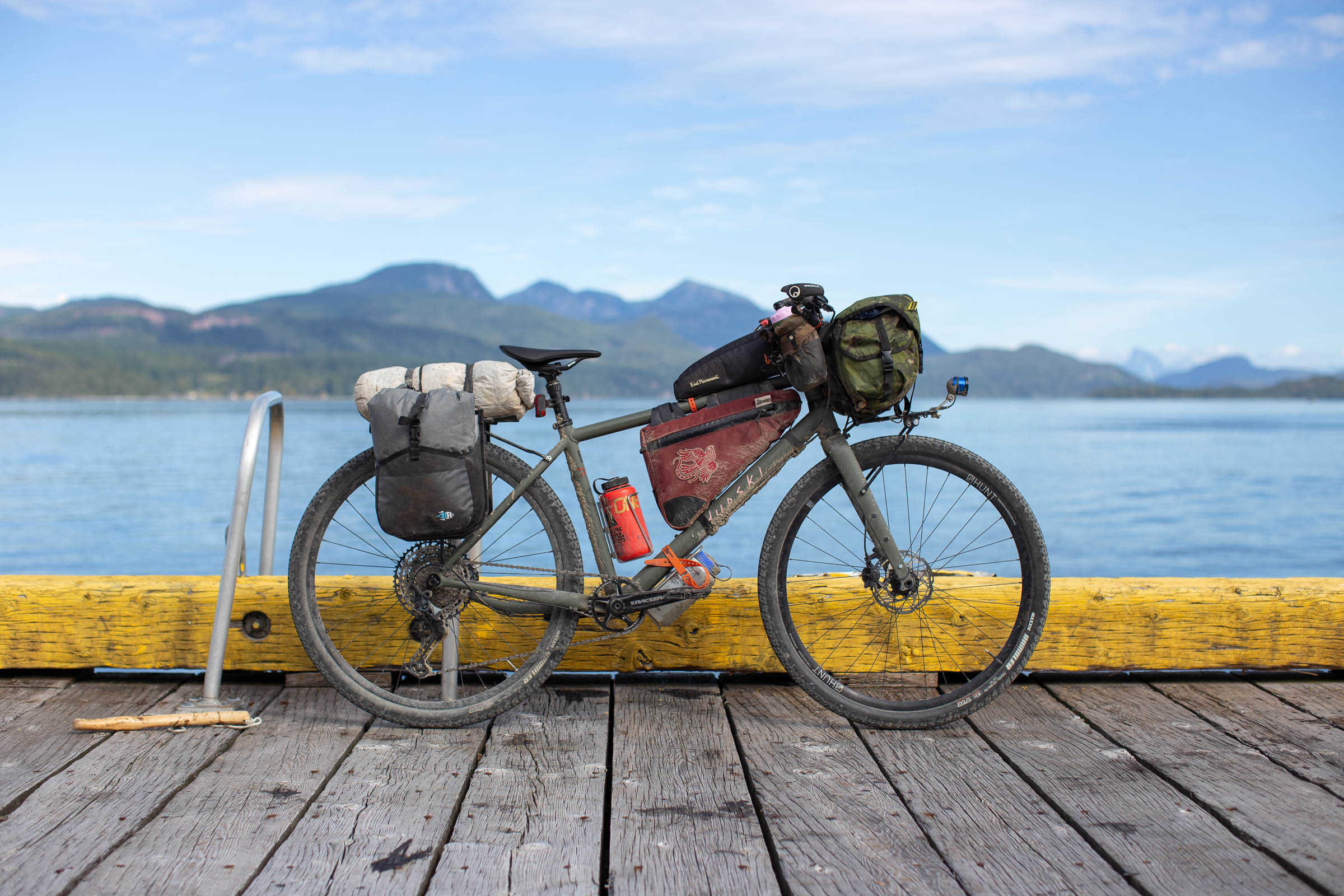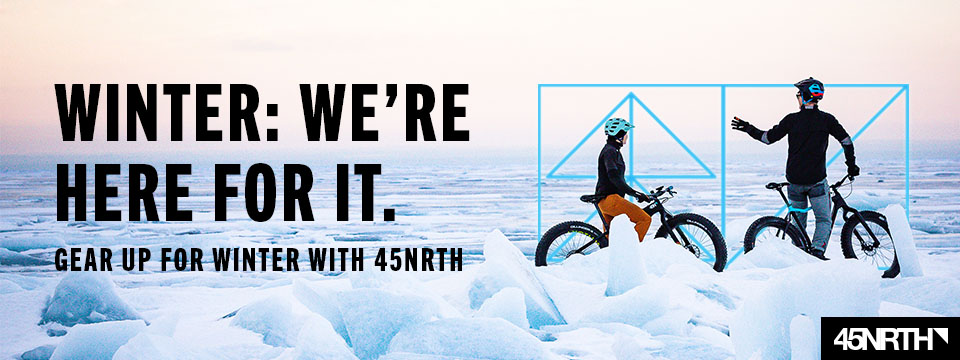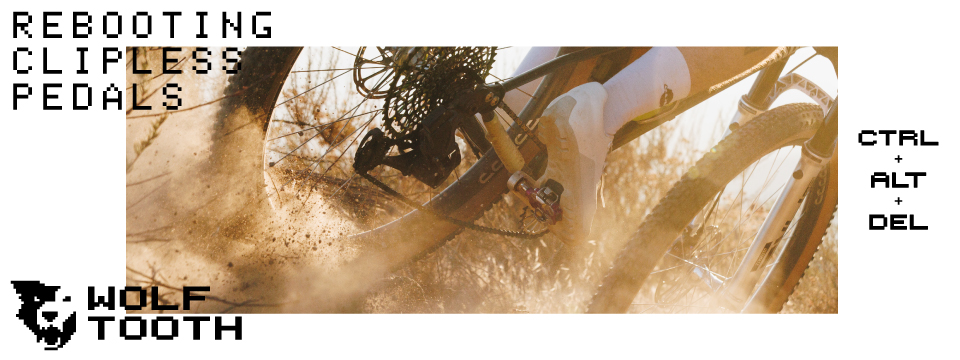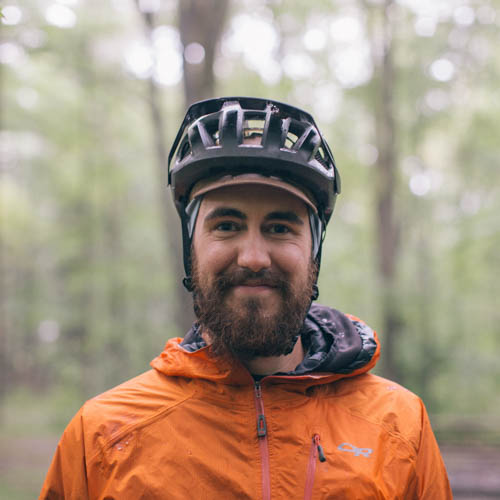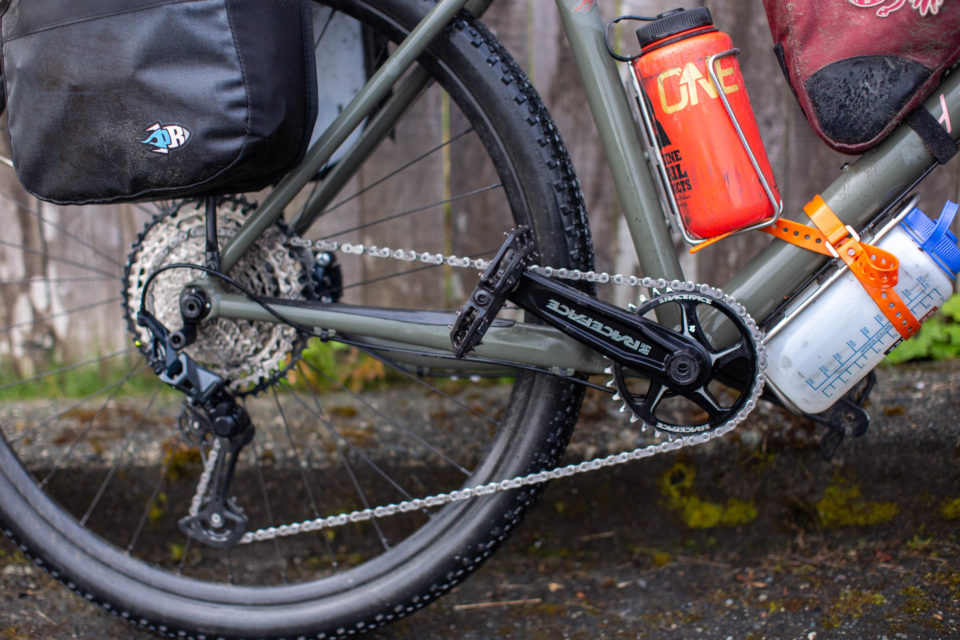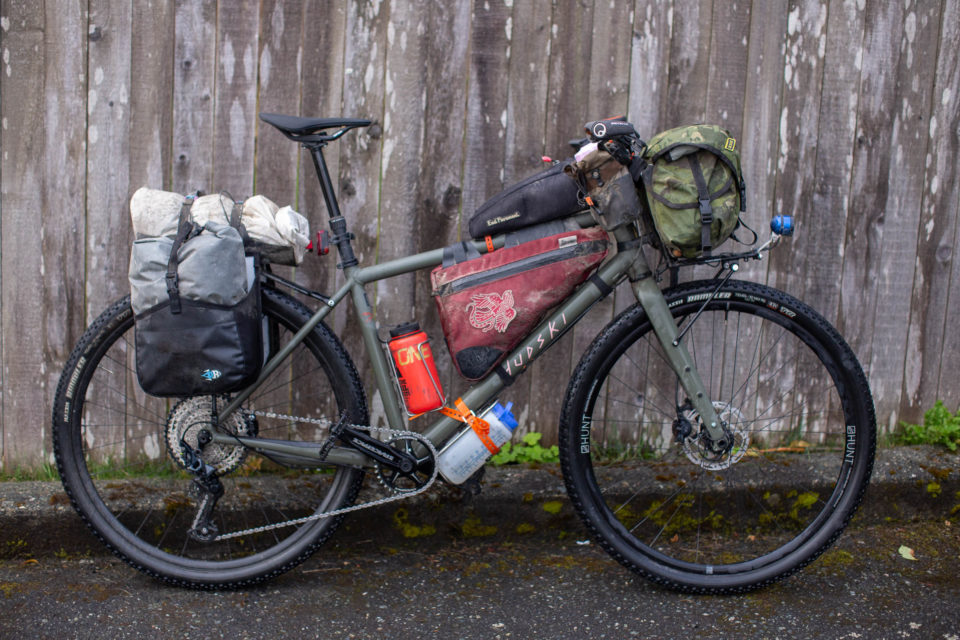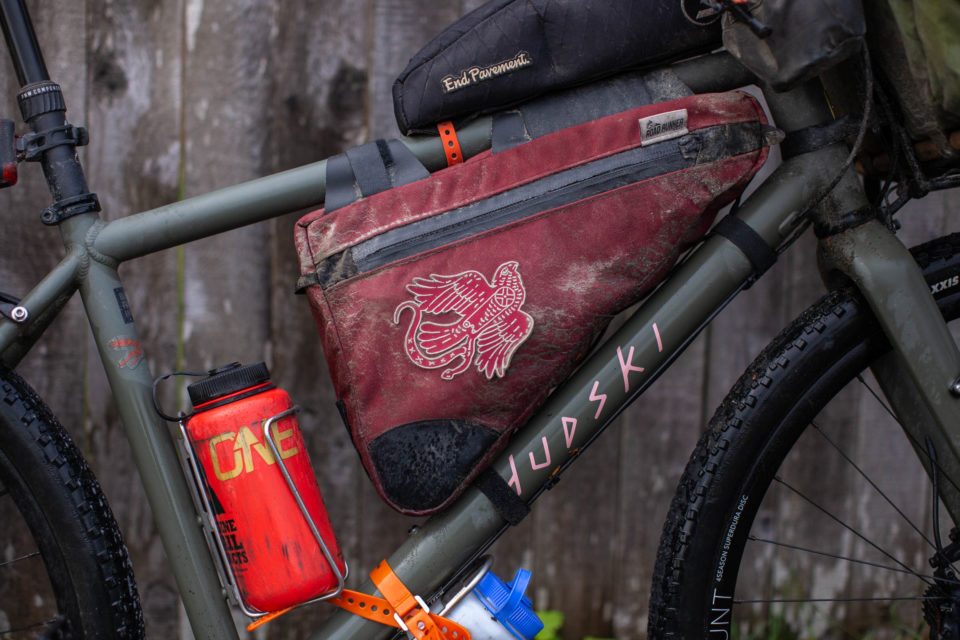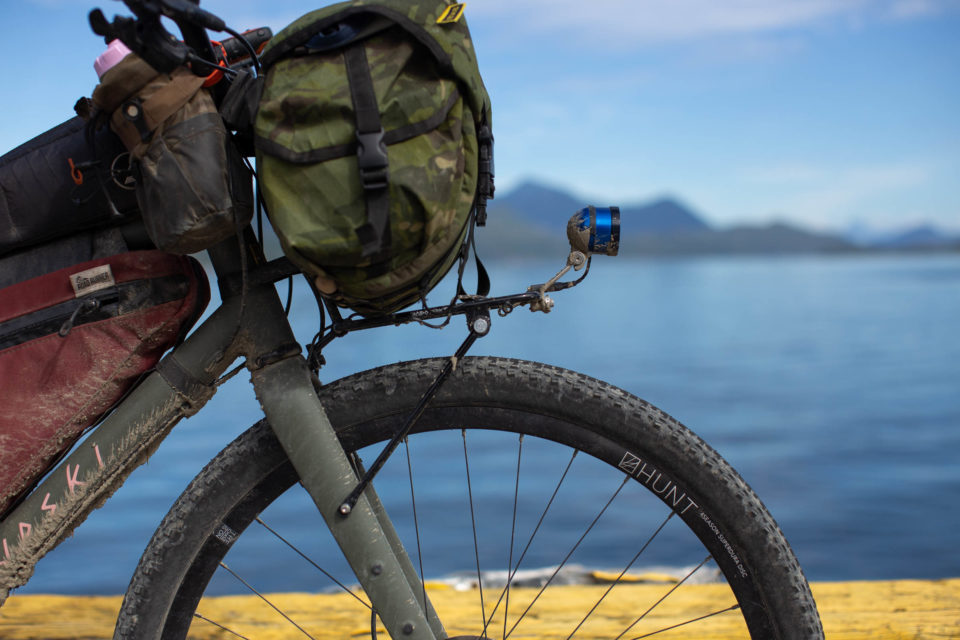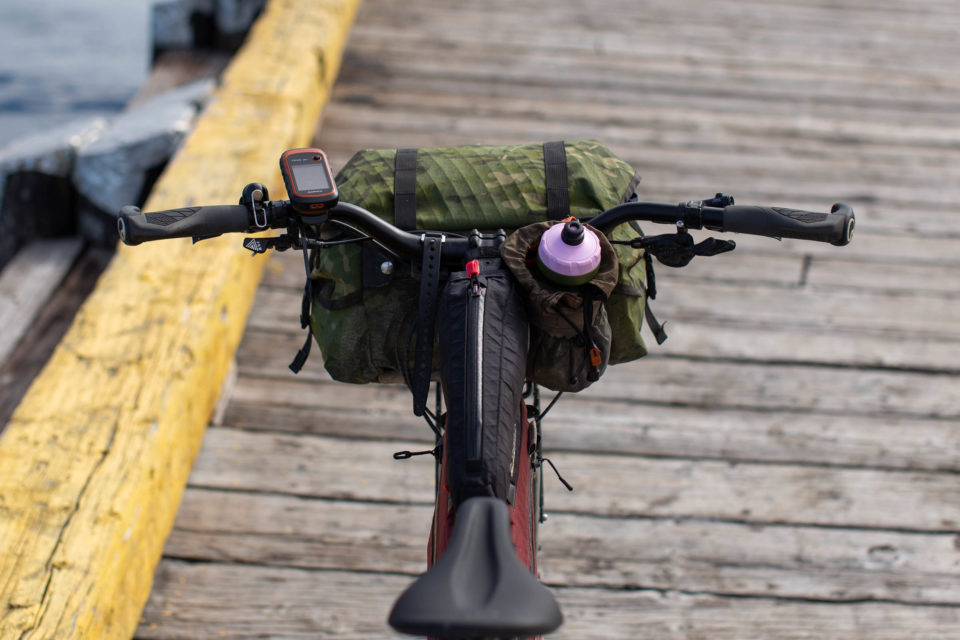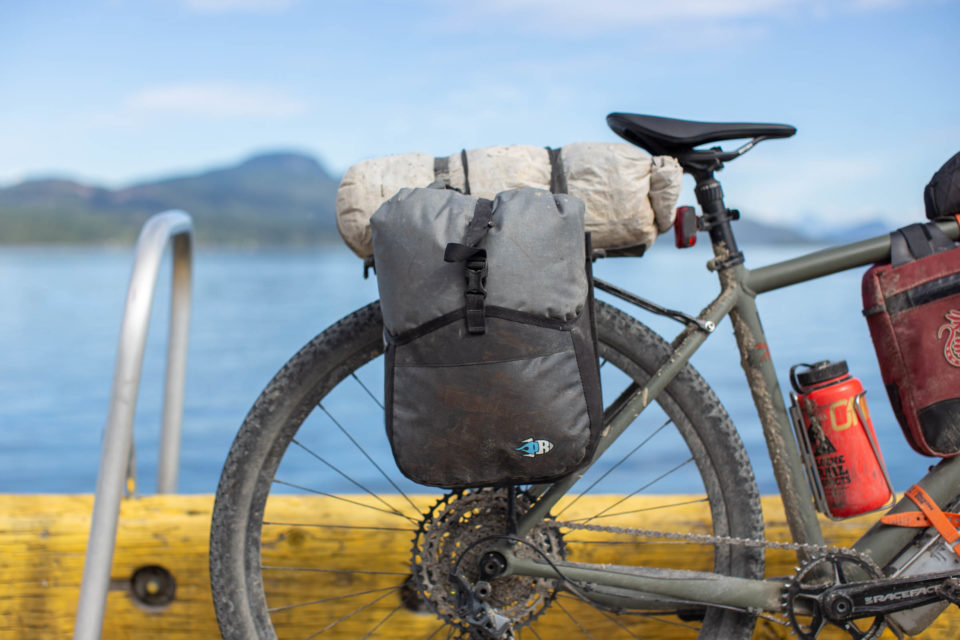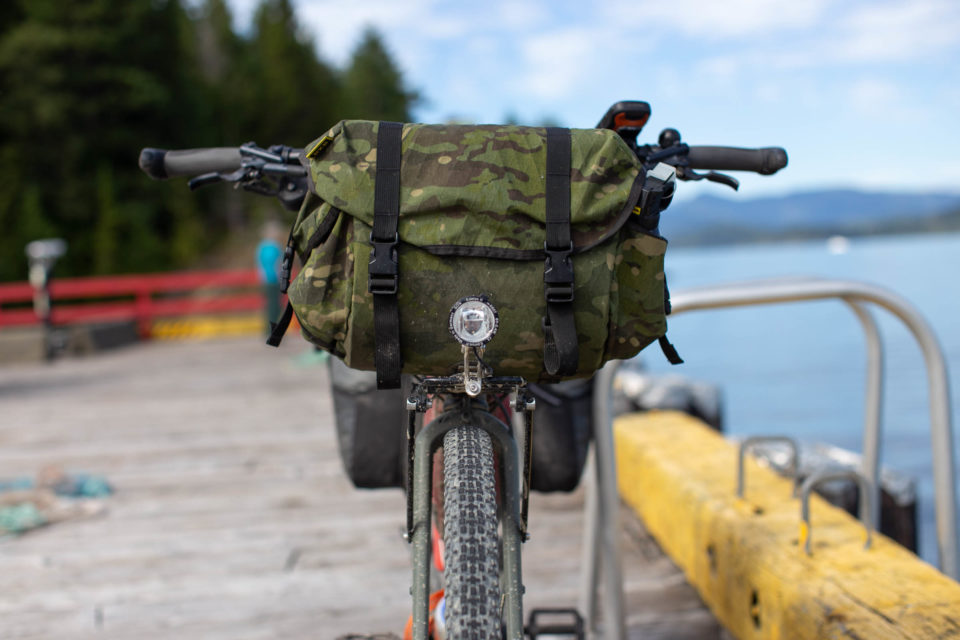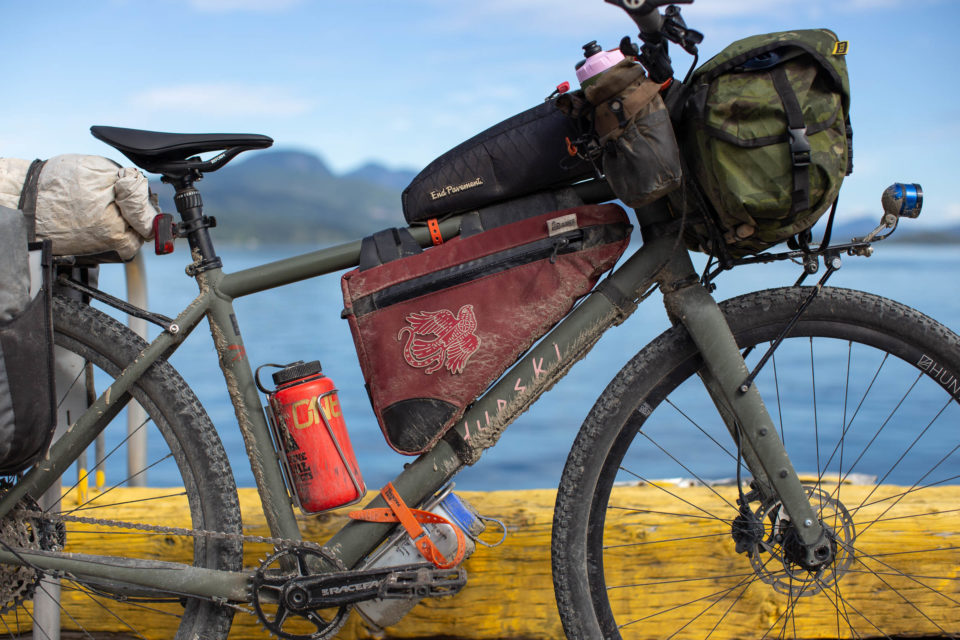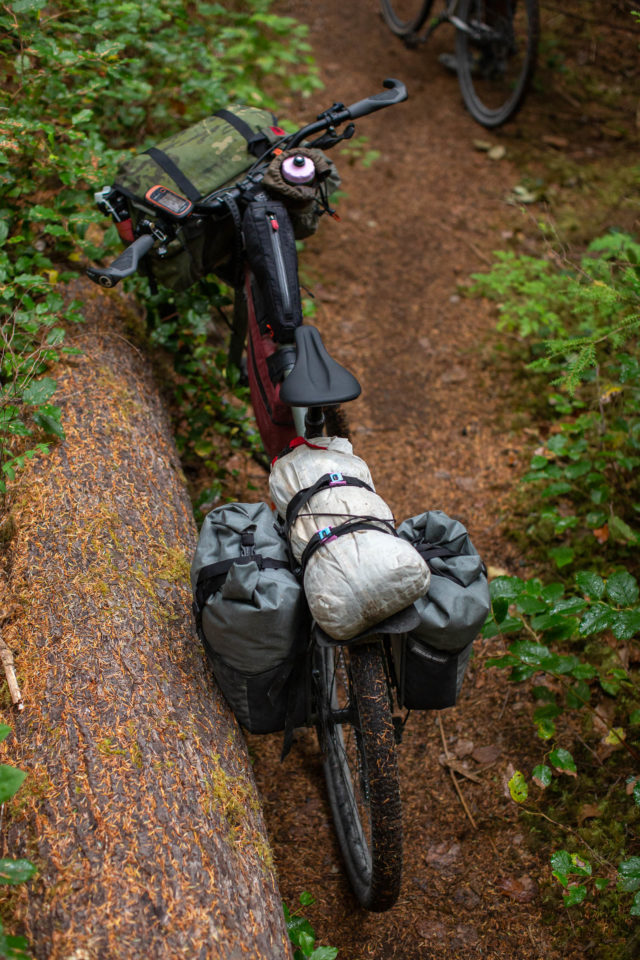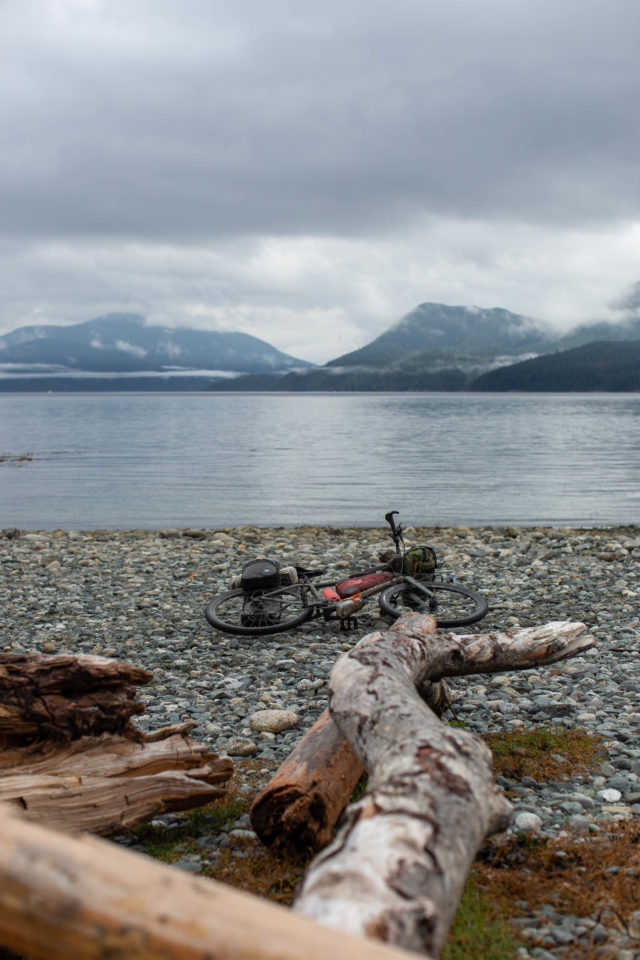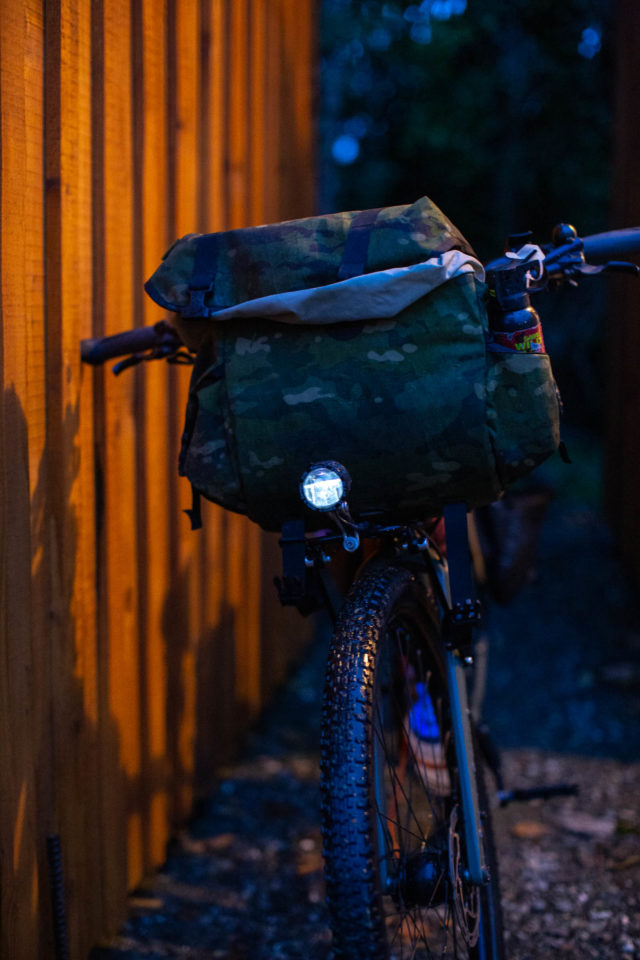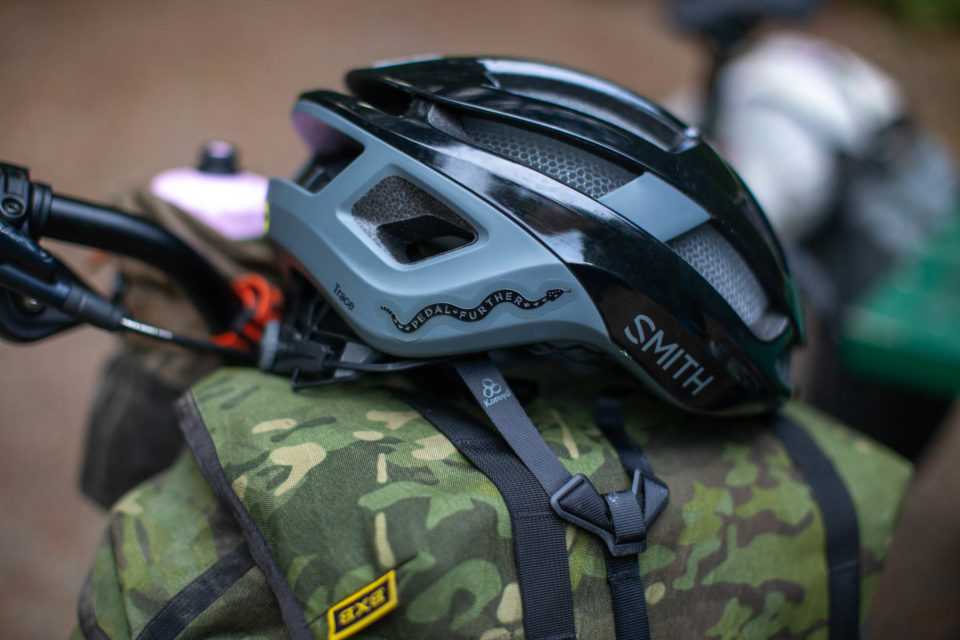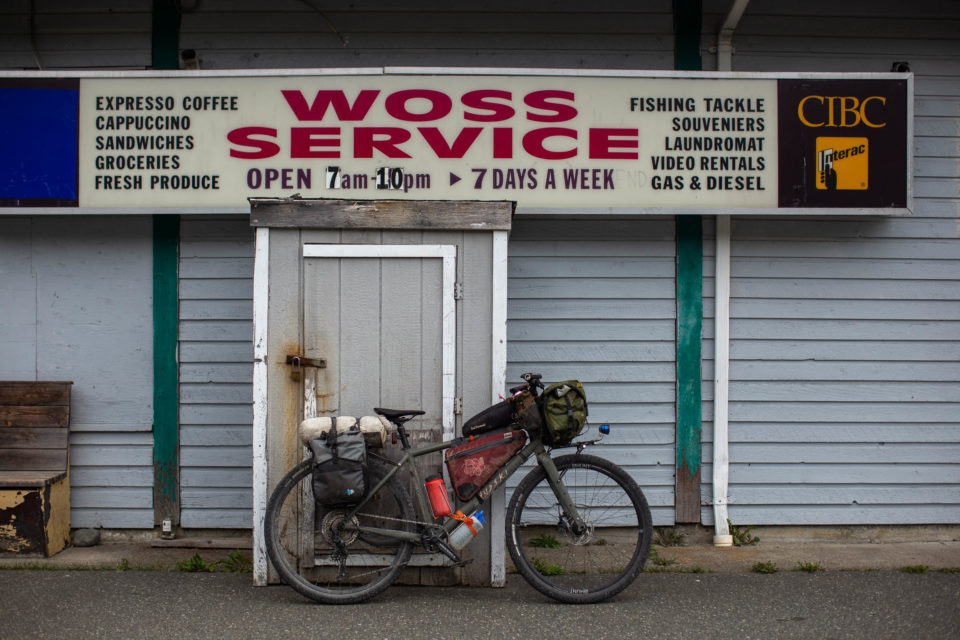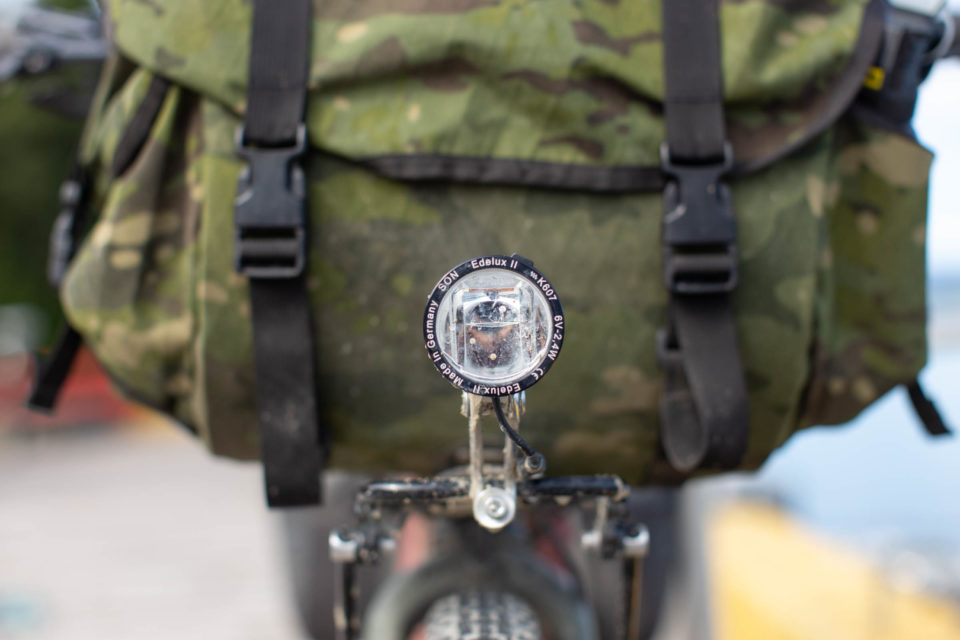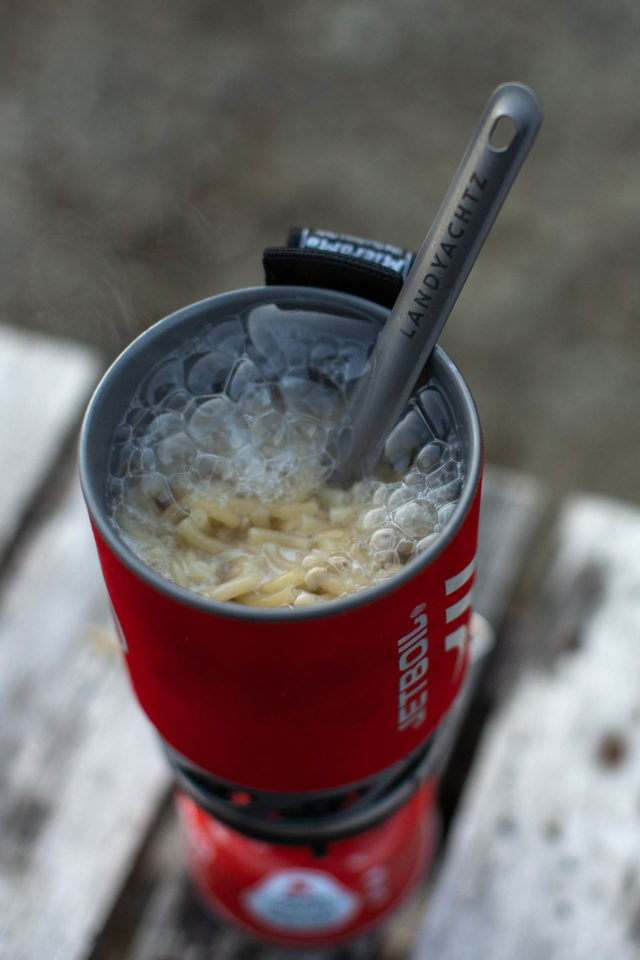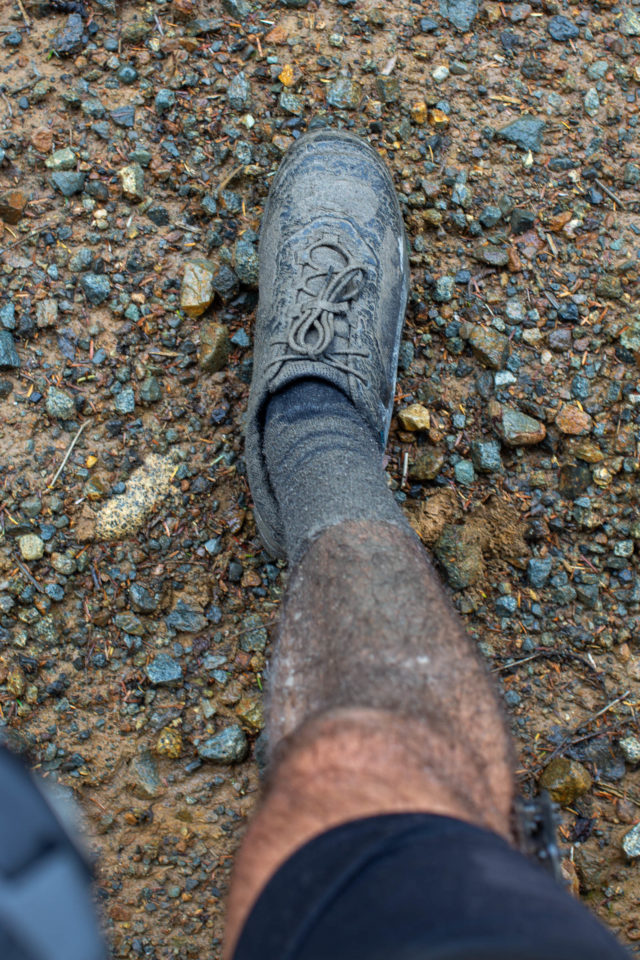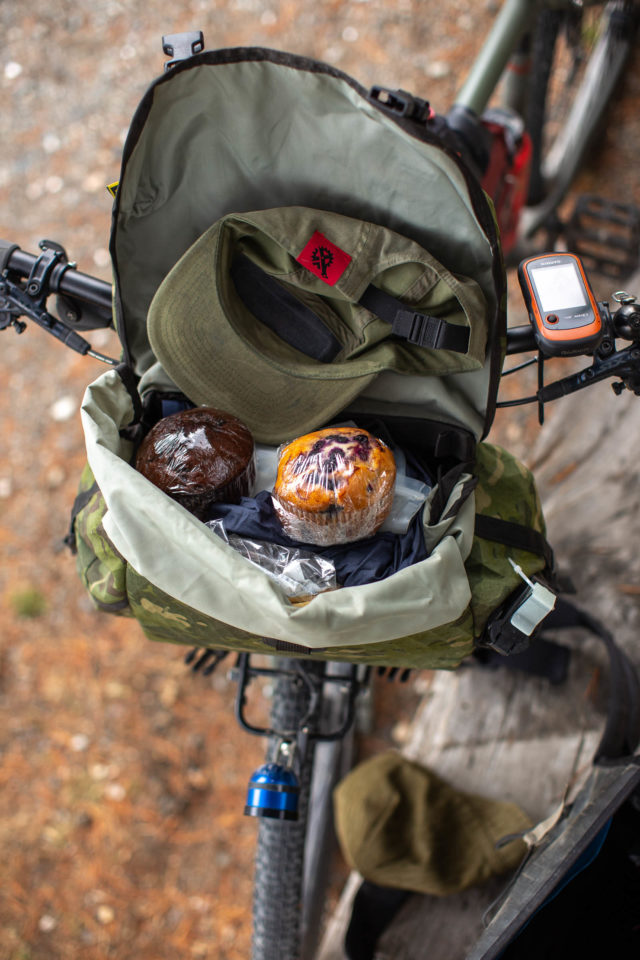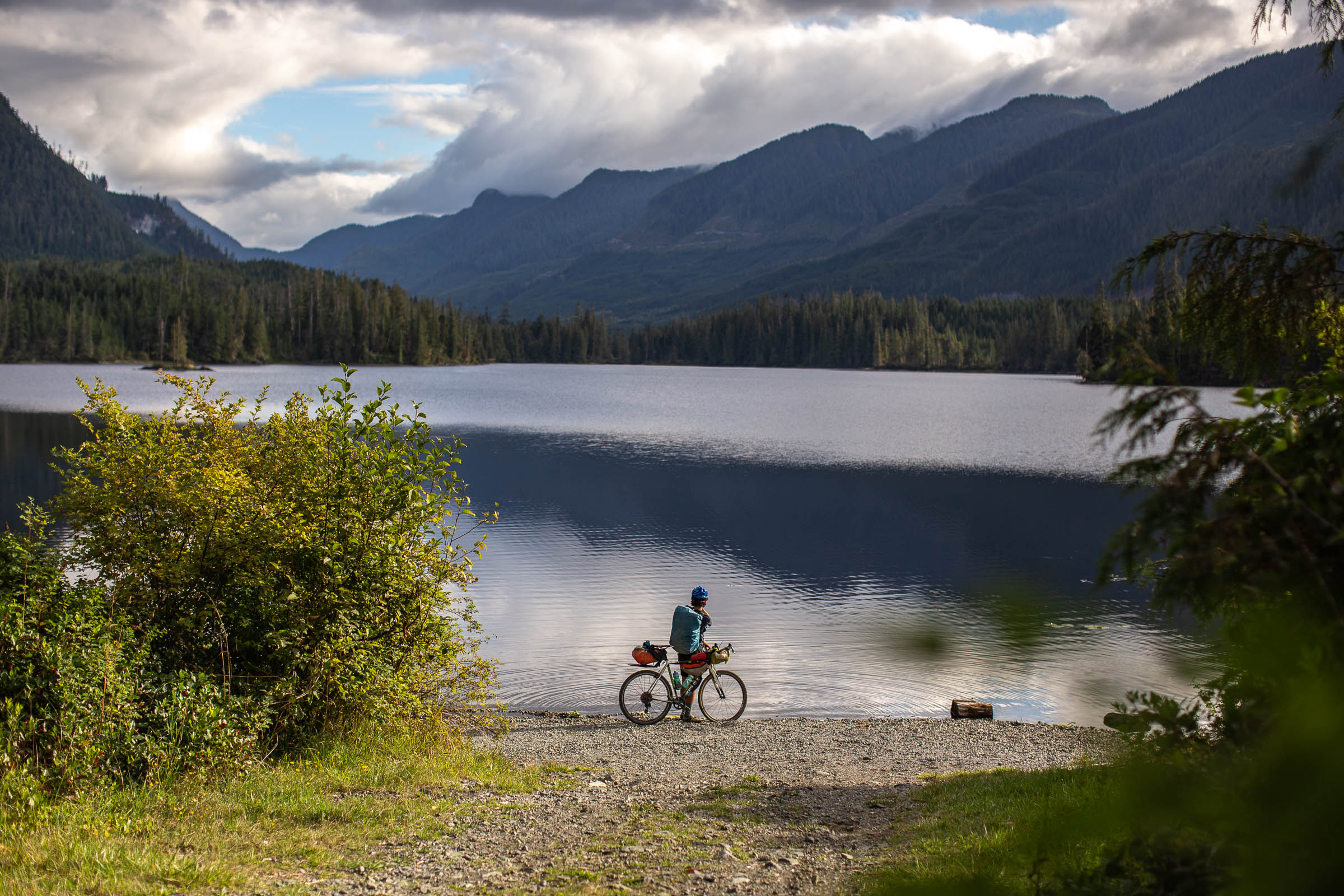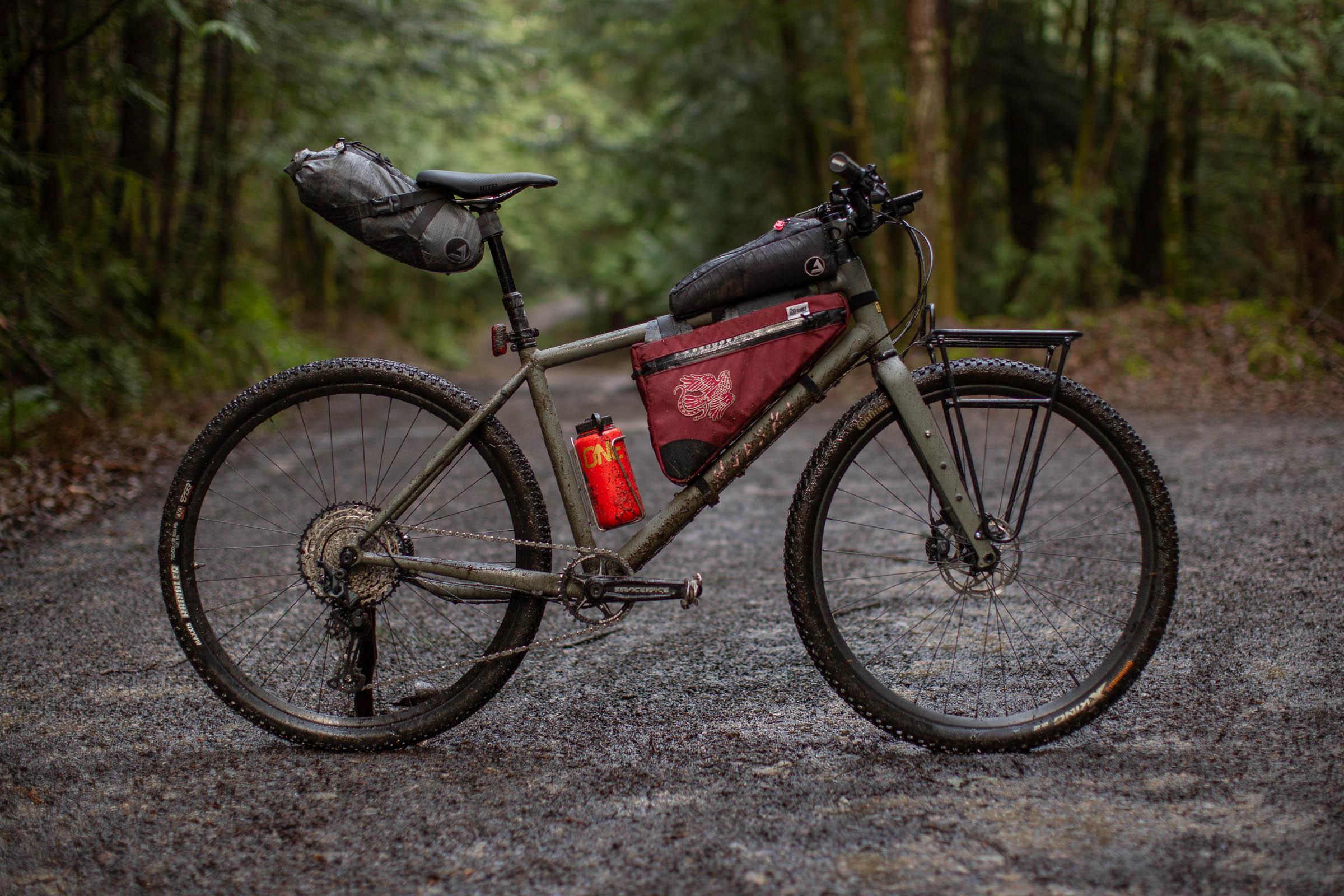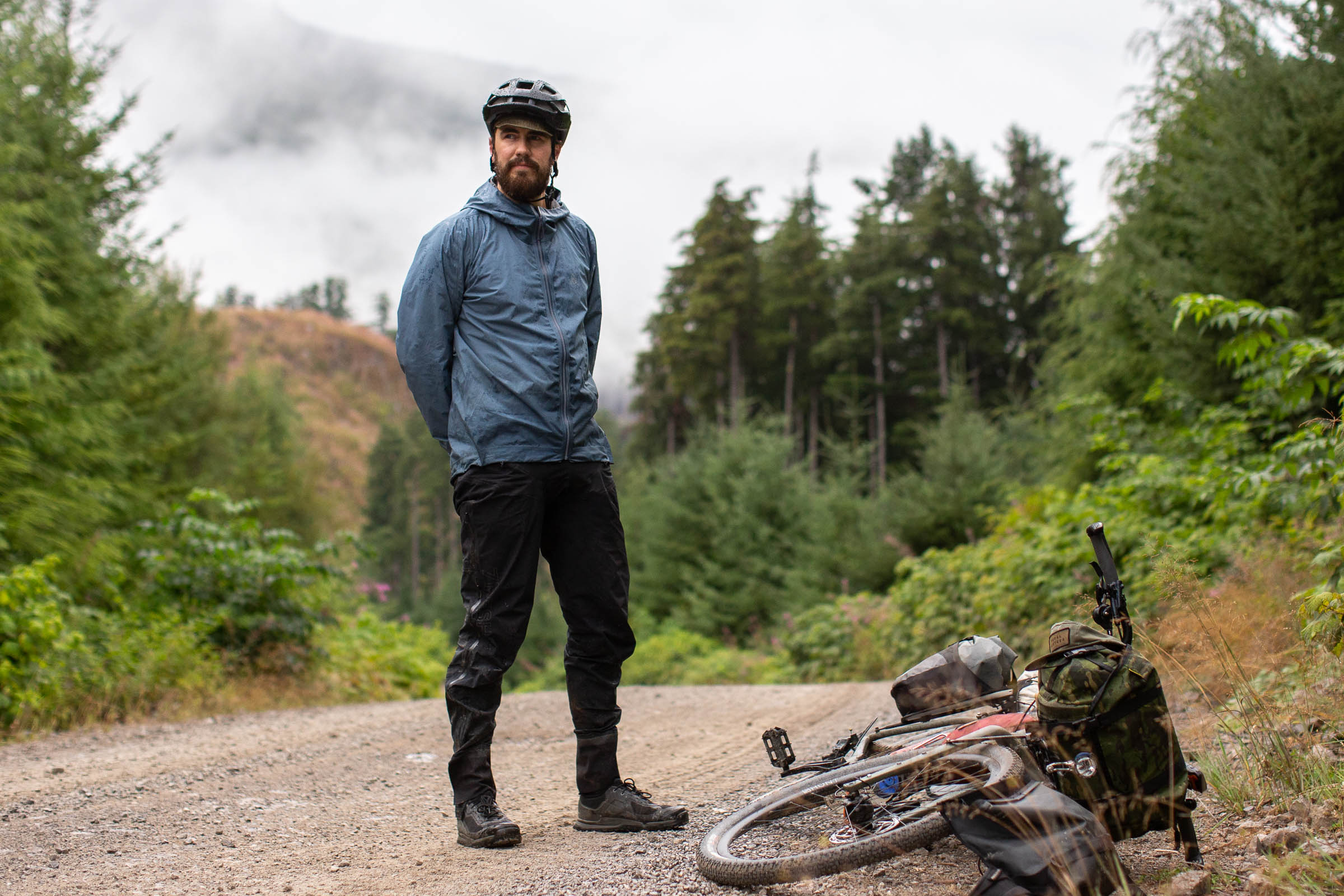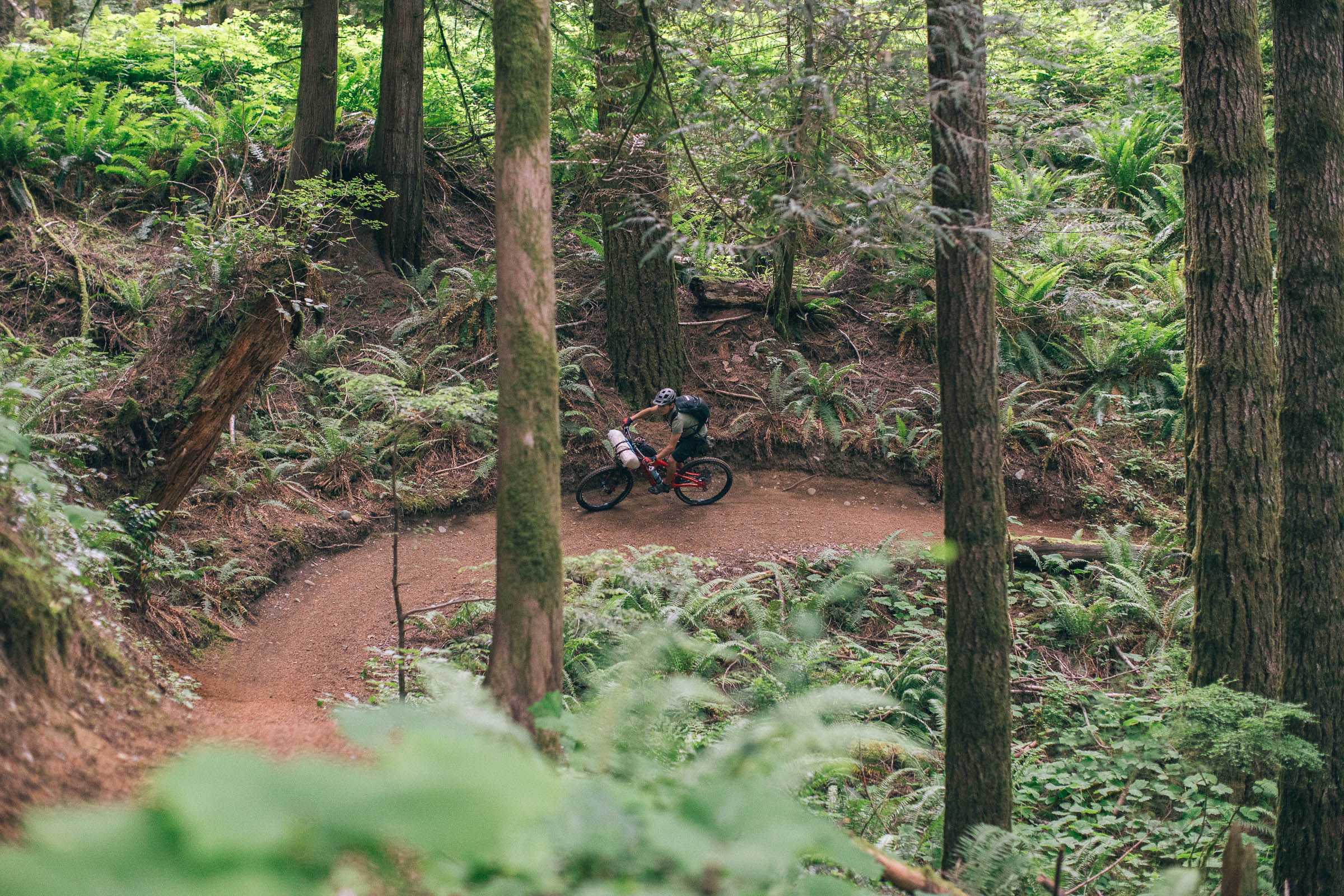Miles’ Tree to Sea Rig and Packlist
Fresh off the road, Miles gives a detailed look at his rig and packlist for his recent scouting trip on the new Tree to Sea Loop on Vancouver Island, British Columbia. Find his complete gear list, details on his Hudski Doggler setup, and thoughts on what worked and what he might change next time here…
PUBLISHED Oct 8, 2021
Ever since the North Island 1000 was introduced to me earlier this year, a route designed for ATVs and dirt bikers to explore the north end of Vancouver Island, I knew I had to check it out by bike. I held off through the heat of the summer and delayed further in hopes that I’d have a new review bike to put through the wringer, but secretly hoped I’d just have to ride my trusty Hudski Doggler, which, after reviewing earlier this year, I was quick to purchase for myself. Since then, it’s been one of my favourite rigs for gravel, road riding, and ripping around town. Hudksi calls it a “sport utility shredder,” and that seems like a fitting description to me. As someone who prefers the control and comfort of flat bars, it’s my idea of a do-everything gravel bike, so I was excited to kit it out for more than 10 days of gravel touring on the North Island.
Following the Tree to Sea Loop we published recently, I’ve put together a detailed breakdown of my entire kit, including bike build details, bags, and gear, as well as some thoughts on what worked and what didn’t. I hope this serves as a resource for those thinking of tackling the route next spring.
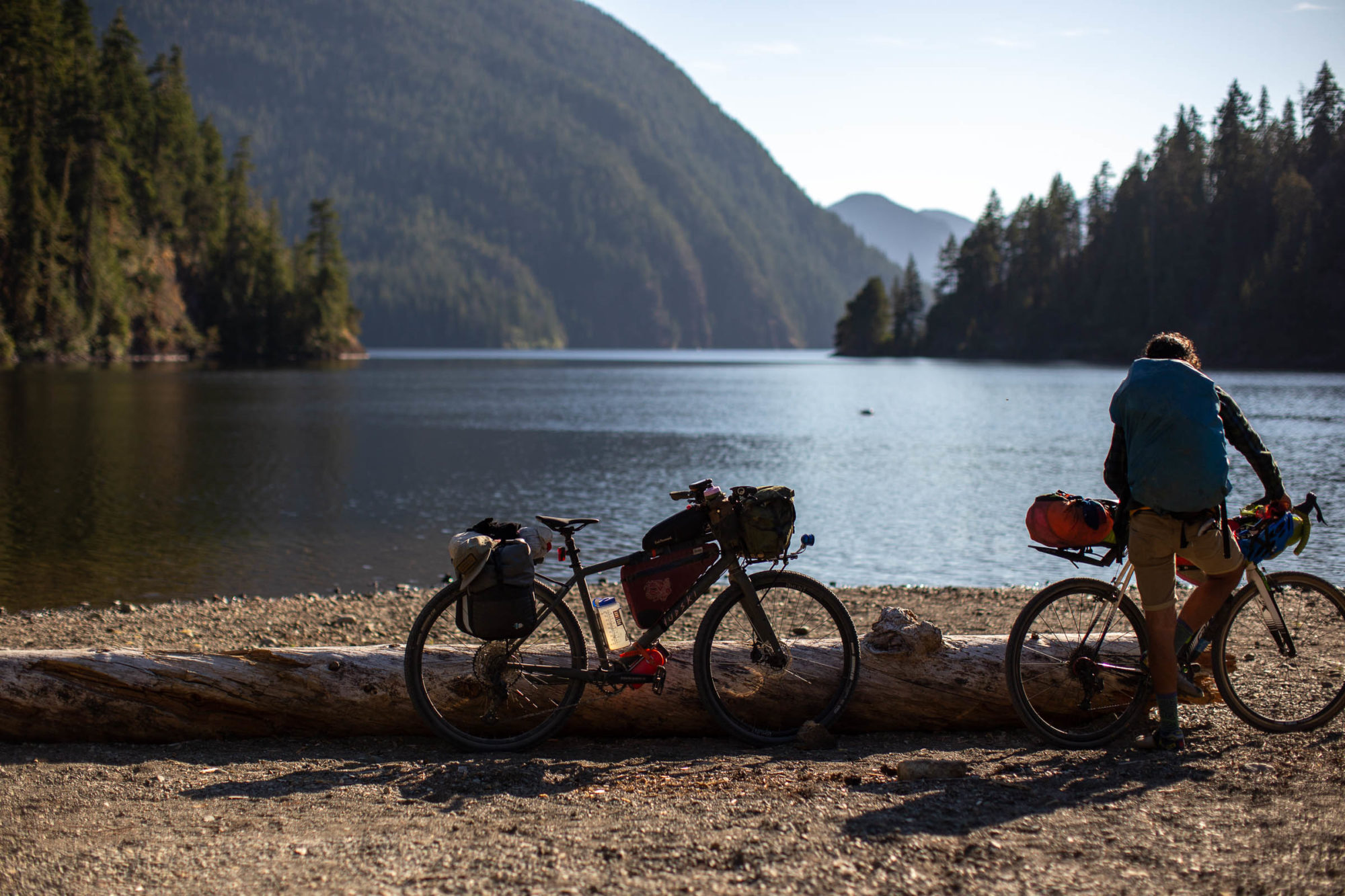
The Bike
The Hudksi Doggler is a modern, do-it-all rigid bike that’s offered in three builds: city, gravel, and mountain. With a $2,000 price tag, carbon fork, and well-rounded build kit, it’s easily one of the most fun bikes I’ve owned. My Doggler is set up in gravel mode with 700 x 50mm Maxxis Rambler tires, Hudski’s very own riser bar, and a 1×12 Shimano drivetrain. Since the stock build leaves little to be desired, it hasn’t changed much. For this trip, I swapped out the saddle for a head-moldable one from Reform, put on some Ergon GS2 grips, and installed front and rear racks for extra utility.
While the Doggler’s versatility is downright impressive, its aluminum frame isn’t the most compliant. I was happy to have the big 50mm tires, carbon fork, and a fairly relaxed riding position since there was a lot of time spent pedalling away in the saddle. While I didn’t have time, or a trainer at hand, to plug in the Reform heat-moldable saddle before my trip, it turned out to be quite comfortable the entire time and I’m looking forward to heating it up and sharing some thoughts soon.
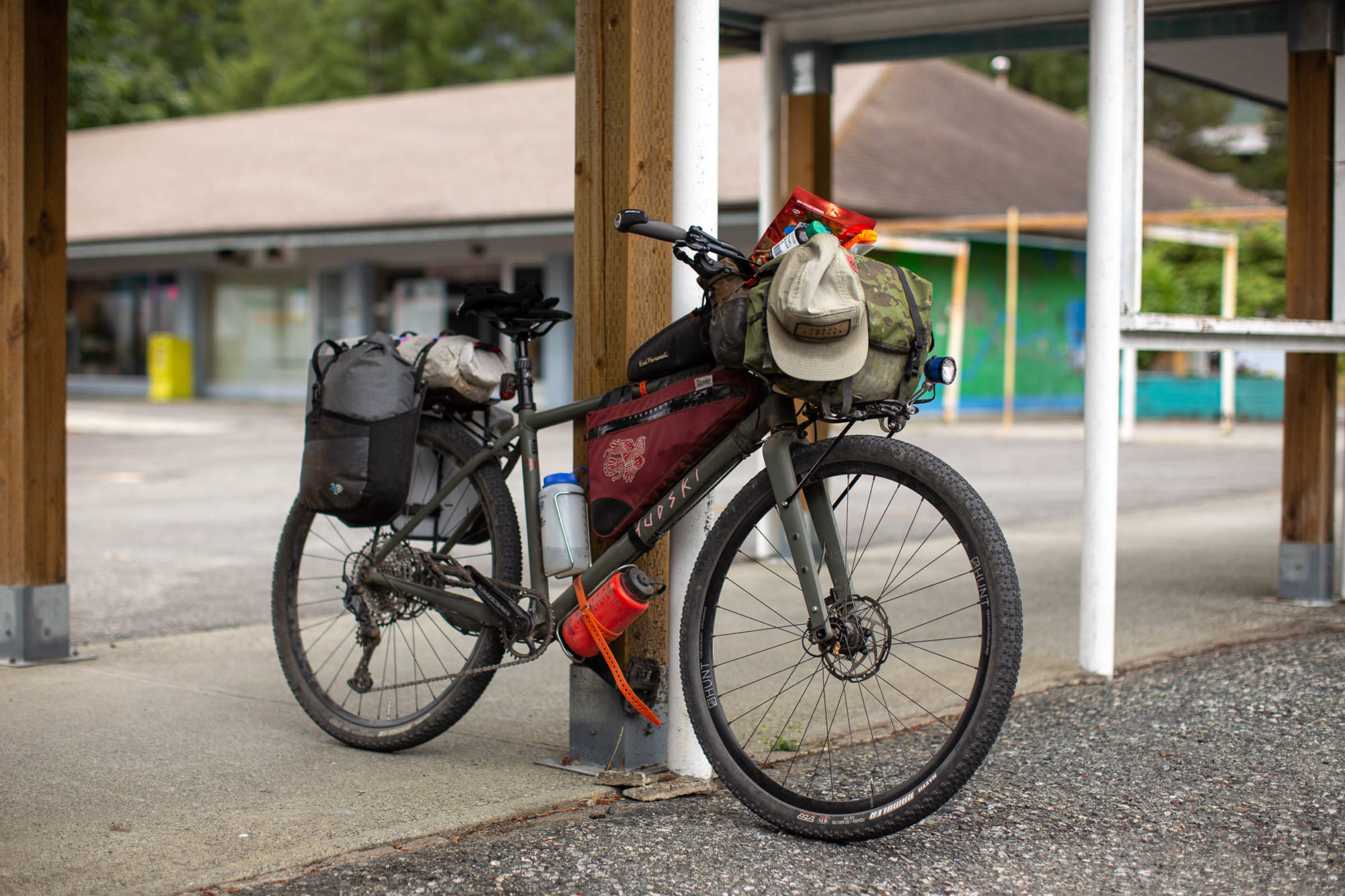
Build Kit
- Frame Doggler Alloy
- Fork Hudski Full Carbon
- Headset Sealed cartridge bearing, 1.125 ZS upper, 1.5 EC lower
- Bottom Bracket Shimano XT, 73mm Threaded
- Crankset Raceface Ride, Alloy 34T
- Cassette Shimano SLX 10-51T
- Rear Derailleur Shimano SLX
- Shifter Shimano SLX, 12-Speed
- Dropper Lever PNW Puget MTB Lever
- Chain Shimano SLX
- Brakes Shimano SLX
- Rotors Tektro 160mm centerlock
- Front Hub SON Delux Dynamo Hub
- Rear Hub Shimano 12x142mm
- Rims 700c Jalco i25 (rear), HUNT SuperDura Dynamo Disc (front)
- Spokes Double Butted
- Front Tire Maxxis Rambler EXO 700x50mm
- Rear Tire Maxxis Rambler EXO 700x50mm
- Handlebar Hudski Longhorn 16
- Grips Ergon GS2
- Stem Hudski Longhorn
- Seatpost PNW Rainer
- Saddle Reform Seymour Saddle
- Front Rack Rawland Rando V3 Rack
- Rear Rack Tumbleweed T-Rack
While a steel or carbon frame would have been more comfortable navigating some of the washboard and rough service roads on the route, the Doggler hit a sweet spot for me. Thanks to its wide bars and 50mm rubber, I wasn’t ever worried about crushing steep gravel descents or exploring trails and decommissioned roads. Its long wheelbase and front end handled the extra weight of my racks, bags, and gear exceptionally well. And, despite a somewhat heavy setup, I wouldn’t describe it as feeling sluggish.
The Tree to Sea Loop could easily be tackled on narrower tires, which might feel more efficient on the flats and some of the climbs, but there’s something to be said for over-biking when being comfortable is more crucial than speed. With that said, my riding partner Peter was running skinny cross tires and had a great time. The group who shared the Tahsis to Zeballos boat ride with us represented a perplex mix of wheel sizes, including 700 x 45mm up to 2.1″, 27.5 x 2.5″, and 26 x 2.3″ – anything works.
The Bags
My bag setup for this trip is my take on a long-distance gravel touring setup. I brought some of my favourite pieces of gear together to make a setup that’s easy to pack, mostly waterproof, and well-balanced. Due to the unpredictable weather on Vancouver Island, particularly on the north end, I chose to bring a warmer sleeping bag, waterproof pants and jacket, and more spare clothes than usual, calling for some extra packing space. Overall, everything functioned perfectly, and I have no complaints to speak of.
Starting at the front, I used a large Bags by Bird (BXB) Piccolo attached to my bars using two large Voile straps. It’s constructed from an ultra-durable X-Pac X50 that uses a waterproof X-Pac ripstop polyester layer and a hard-wearing 500 denier nylon face fabric. I stashed the majority of my daily essentials in here, including lots of snacks, electronics, my water filter, and some quick-access items in the side pockets, including my bear spray, bear bangers, and bike lock. When I was lucky enough to resupply before camp, the Piccolo offered plenty of overflow room to lash down a cold beverage and a couple of extra nighttime snacks to enjoy later. While the Piccolo doesn’t require a rack or support, I opted to run my Rawland Rando V3 rack to help keep the bag off my head tube and provide a clean home for the SON dynamo light I was using.
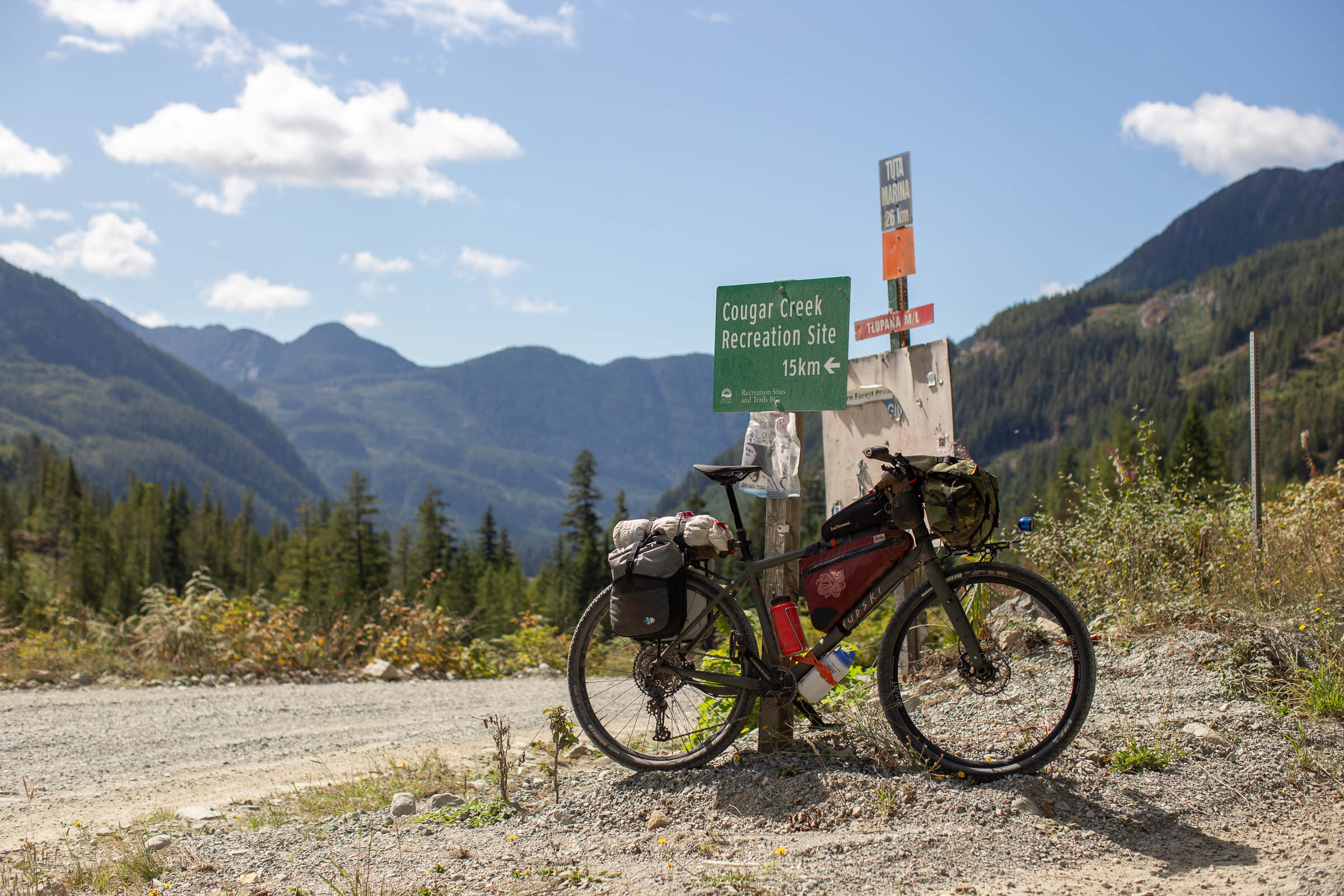
My cockpit consisted of a single Randi Jo Fabrications Bartender Bag, which held a standard water bottle that I would refill throughout the day from my larger Nalgene bottles. I threw on my beloved JPaks Footlong top tube bag at the last minute to stash snack wrappers, my phone, and my mask. The Roadrunner Wedge Mountain Bike Full Frame Bag fits perfectly in my Doggler’s frame and was home to my pump, repair kit, some food, and lunch goodies (usually cheese and dried sausage). I stashed some toilet paper and my trowel in the non-drive-side pocket. In the empty space on my seat tube next to the frame bag, I mounted a Widefoot LiterCage with a wide-mouth Nalgene. I mounted a King Cage Manything Cage under my downtube for an additional Nalgene, secured in place using a Voile strap.
Mounted to my Tumbleweed T-Rack, I used two Porcelain Rocket (now made by Rockgeist) Microwave Panniers for hauling my bulkier gear like my sleeping bag, sleeping pad, down sweater, stove and fuel, and clothing. The dry bag on top is paired with Rockgeist’s new Armadillo Dry Bag Protector, which not only kept dirt and grime off the bottom of the bag, but the elastic provided a spot to dry gear out on sunny days. The entire setup was lashed to the top of the rack using two 3/4″ Austere Manufacturing cam buckle straps. These buckles are CNC machined in the USA and incredibly high-quality. You can learn more about them here.
The Gear
My gear list was based around wet and potentially cold weather while remaining relatively lightweight. I brought my warm winter-rated Timmermade Wren False Bottom Sleeping Bag to have somewhere cozy to crawl into at night and paired it with my merino wool long johns, down sweater, and Pedal Further Woolie Boolies. Taken all together, I was quite confident I could keep warm at camp or hunkered down out of the rain. There were a few days when the transition from being nearly soaking wet after hours of riding in the rain to changing into dry clothing wasn’t quick enough, and I found myself uncomfortably cold. In these instances, I was surely distracted by some variety of pub food, so next time I’d prioritize getting out of wet gear and drying it before devouring a family-sized meal.
Next time, I’d leave my lightweight rain jacket at home and pack a proper three-layer jacket with vents. The 7Mesh Thunder Pants worked impressively well, and I also had great luck using some RAB Vapour Barrier Liner Socks over my riding socks to help keep my feet somewhat dry but quite warm on some seriously miserable days. In the end, I didn’t even use a full fuel canister, so could have left one at home. And while I didn’t require my repair kit or tools, I felt confident knowing they were there.
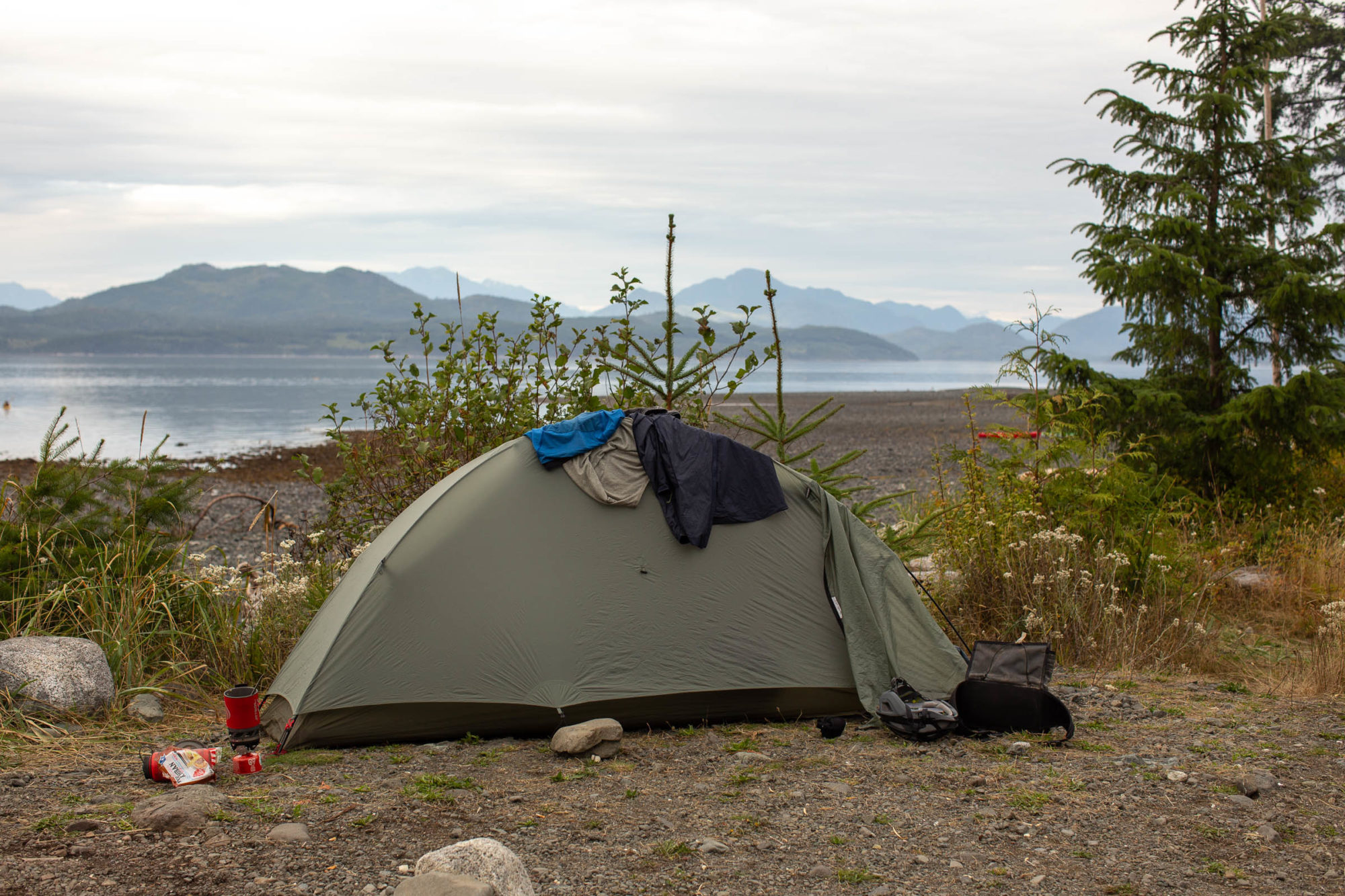
Sleeping
Big Sky International Soul 1P (Bikepacking Version), Timmermade Wren False Bottom Sleeping Bag (-6.6°C / 20°F), Exped AirMat UL Long/Wide, Cocoon Ultralight Air-Core Pillow.
Clothing & On Body
Chrome Madrona 5-Pocket Shorts, Ornot Trail Shirt, 7Mesh Elevate Long Sleeve, 7Mesh Foundation Boxer Brief, Boody Bamboo Boxer, Synthetic Compression Boxer, Pedal Further Woolie Boolie Socks, Sock Guy Wool Socks, Synthetic Riding Socks, MEC Merino Wool Long Johns, Timmermade SUL 1.5 Down Sweater, 7Mesh Northwoods Wind Shell, 7Mesh Copilot Jacket, 7Mesh Thunder Pants, RAB Vapour Barrier Liner Socks, Specialized Rime Flat Shoes, Porcelain Rocket cap, Wendigo Ultra Buff, Smith Trace Helmet, Pedal Further Hat, POC Resistance Gloves.
Electronics
BioLite 5,200mAH power bank, USB wall jack, iPhone, Garmin eTrex 20x, headphones, Black Diamond Storm headlamp, Bontrager Flare R taillight, SON Edelux II Dynamo Light, Canon 6D with 50mm F1.2 lens, two camera batteries, three SD cards, Garmin InReach Mini, Micro USB and iPhone charging cables, spare AA and AAA batteries.
Tools / Repair Parts
Revelate Toolcash, Wolf Tooth Pack Pliers, Affinity Carbon Tire Levers, zip ties, Park Tool Valve Core Tool, Dynaplug Micro Pro, Park Tool Tire Patch Kit/Tire Boot, curved needle/floss, super glue, lighter with duct tape, Lezyne Micro Floor Drive pump, spare shift cable, Schrader/Presta adapter, spare tube, Topeak Alien II multi-tool, spare chain section, quick link, sealant, Terske rotor lockring tool and travel hex tool, Gerber Dime.
Cooking / Food
Jetboil MicroMo stove, 3x fuel canisters, Landyachtz Ti long spork, titanium mug, two days’ worth of breakfast, snacks, and dinner at all times, Sawyer Mini water filter, HydraPak Stash 1L bottle, small mason jar of peanut butter.
Personal / Hygiene
Toilet paper, trowel, baby wipes, moisturizing lotion, debit/credit card, ID, cash, BC Ferries experience card, Smith Lowdown XL sunglasses, Ottolock, face mask.
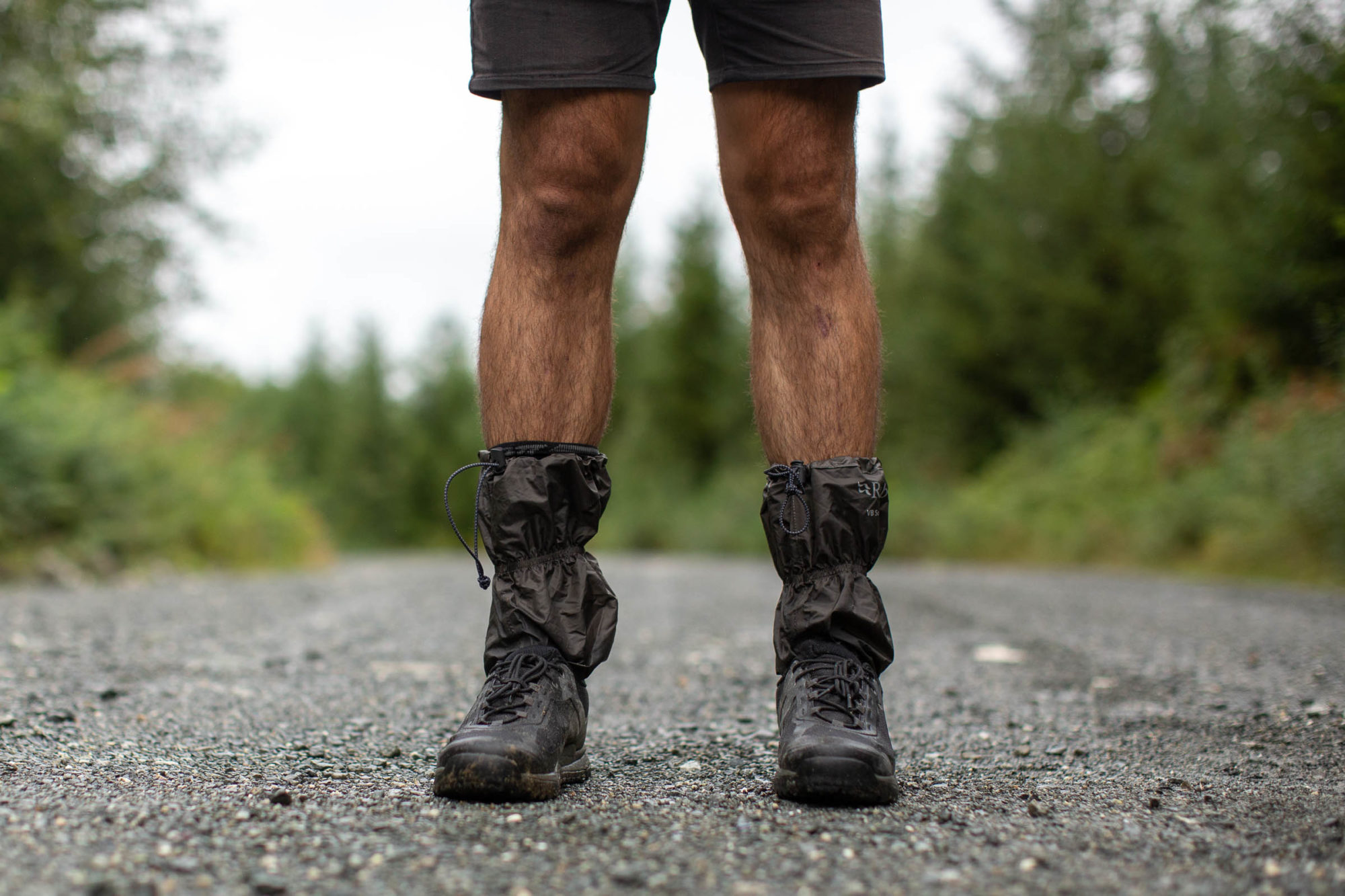
Wrap Up
In the absence of mechanicals or gear failures, I’m quite happy with my setup for this rather large route-scouting mission. The vast majority of the route was new to me, so I wasn’t quite sure what to expect in terms of road conditions and difficulty. If I was heading out next week to ride the route again, I wouldn’t change much. I might consider bringing waterproof shoe covers to replace my vapour barrier socks, and I’d probably toss a tarp on my rear rack to have when the weather really turns. I’m so excited to see people getting out on the route this spring. I think it’s going to blow your minds! Make sure to stop by Powell River on the way to the start and say hi.
Tree to Sea Loop
The newly published Tree to Sea Loop is an incredible 1,000-kilometre gravel loop around the lesser-known areas on the north end of Vancouver Island, British Columbia. The route links massive valleys, oceanside villages, towering coastal mountains, and deep fjords via an impressive patchwork of forest service roads. Aside from some of the best gravel riding on the coast, there are opportunities for spelunking, whale watching, waterside camping, and much more. Find the full route guide here.
Related Content
Make sure to dig into these related articles for more info...
Please keep the conversation civil, constructive, and inclusive, or your comment will be removed.







